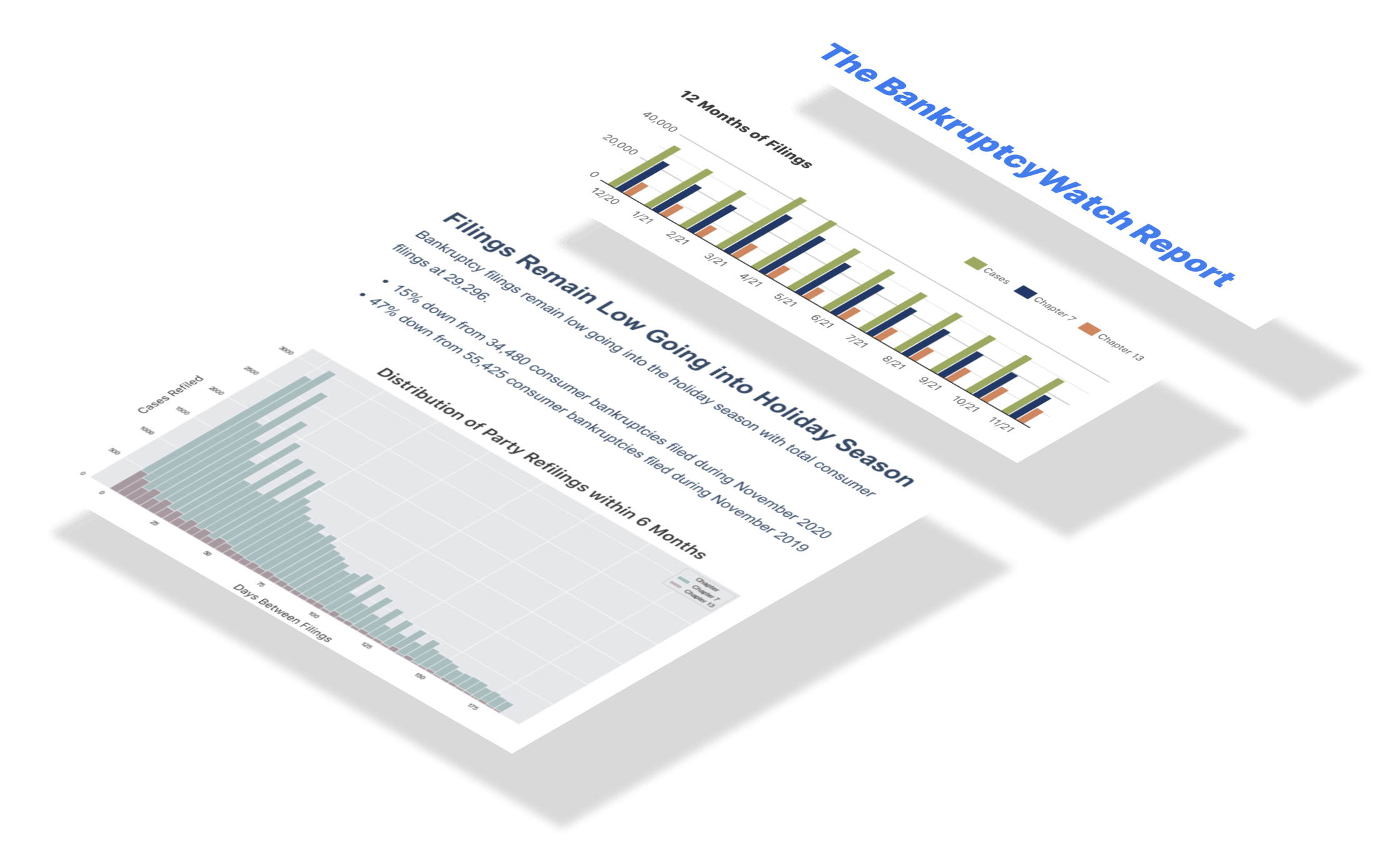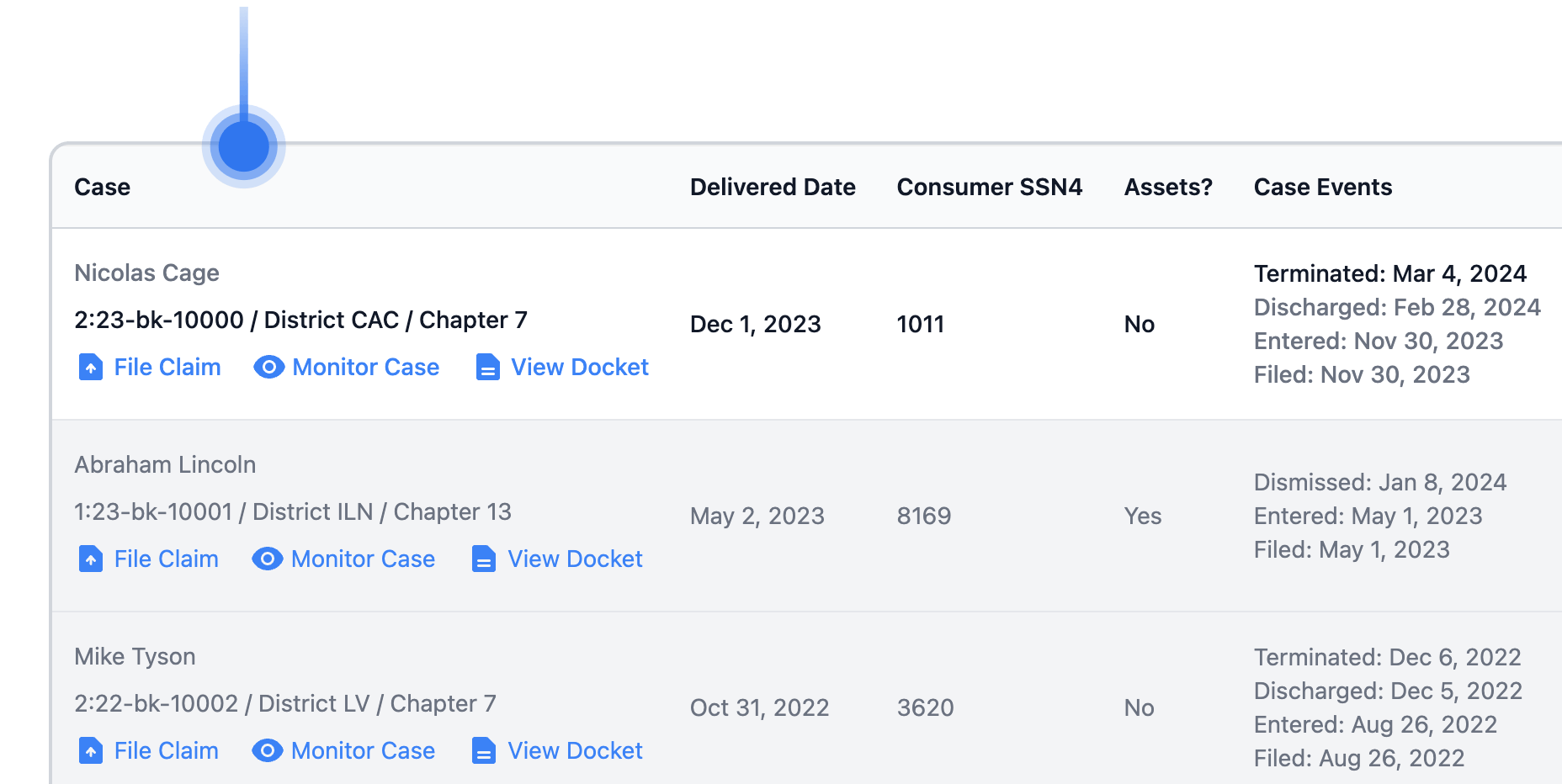Claude 4.5 Sonnet Extended Analysis of the Bankruptcy Statistics
1. Overview of this week's National filings. Week 41 of 2025 recorded a total of 10,495 bankruptcy filings across the nation, representing a significant volume of financial distress cases. Chapter 7 liquidation bankruptcies dominated with 6,154 filings, comprising 58.6% of all cases filed during this week. Chapter 13 reorganization cases totaled 4,143 filings, accounting for 39.5% of the weekly total. Chapter 11 business reorganizations reached 192 filings, while Chapter 12 agricultural bankruptcies remained minimal at just 6 cases. This distribution reflects the traditional pattern where individual consumer bankruptcies vastly outnumber business and agricultural filings.
2. An interesting fact about this week's filings. Week 41's filing total of 10,495 falls below the year's peak of 14,989 filings recorded in week 35, which represents the highest single-week volume in 2025. The Chapter 11 business bankruptcy count of 192 for week 41 exceeds the 2025 weekly average of 166 cases but remains well below the peak of 472 business filings observed in week 28. Interestingly, week 1 of 2025 recorded the lowest filing volume at just 7,529 cases, demonstrating significant week-to-week volatility throughout the year. The range between the highest and lowest weeks spans over 7,460 filings, illustrating substantial fluctuations in bankruptcy activity. This variability suggests that seasonal factors and economic conditions create meaningful short-term variations in filing patterns.
3. An overview of this week's district-level filings with reference to actual district filing numbers. The Northern District of Georgia led all jurisdictions with 520 filings in week 41, combining 226 Chapter 7 cases, 273 Chapter 13 cases, and 21 Chapter 11 cases. The Middle District of Florida followed closely with 486 total filings, including 354 Chapter 7 liquidations and 120 Chapter 13 reorganizations. California's Central District recorded 461 filings with a heavy Chapter 7 concentration of 391 cases, while Illinois Northern District reached 421 total filings split between 228 Chapter 7 and 192 Chapter 13 cases. Michigan's Eastern District rounded out the top five with 335 filings, and New Jersey recorded 286 cases including a notable 41 Chapter 11 business bankruptcies—one of the highest business filing counts among all districts.
4. Geographic (district) disparities in filings. The geographic distribution of bankruptcy filings reveals stark disparities across jurisdictions, with the Northern District of Georgia's 520 filings representing 130 times the volume of the Northern District of West Virginia's mere 4 filings. Alaska recorded only 6 cases during week 41, while North Dakota filed just 7 bankruptcies, demonstrating how sparsely populated states contribute minimally to national totals. The top ten districts collectively account for 3,525 filings, representing 33.6% of the national total despite being only a fraction of the 94 federal judicial districts. Districts with fewer than 15 filings include Hawaii (15), New Hampshire (14), Maine (13), West Virginia Southern (13), South Dakota (12), Wyoming (11), and the District of Columbia (10), highlighting significant regional variation. These disparities reflect differences in population density, economic conditions, state-level debt and consumer protection laws, and regional cultural attitudes toward bankruptcy.
5. Current year focus. Through 41 weeks of 2025, the nation has recorded 443,796 total bankruptcy filings, averaging 10,824 filings per week—a substantial increase over historical norms. The first quarter of 2025 (weeks 1-13) saw 132,048 filings with a weekly average of 10,158, while the second quarter (weeks 14-26) increased to 144,202 filings averaging 11,092 per week. The third quarter (weeks 27-39) maintained momentum with 143,549 filings and an 11,042 weekly average, demonstrating consistent elevated filing activity throughout the year. The most recent eight weeks (weeks 34-41) averaged 11,421 filings per week, suggesting an acceleration in bankruptcy activity as the year progresses. This sustained high volume indicates that economic pressures on both consumers and businesses remain intense throughout 2025.
6. Comparative analysis with previous years. Week 41 of 2025's total of 10,495 filings represents a 14.4% increase over the same week in 2024, which recorded 9,177 filings. Looking further back, week 41 of 2023 saw 8,561 filings, while week 41 of 2022 recorded just 7,060 cases—meaning 2025's week 41 shows a 48.6% increase compared to three years earlier. On an annual basis, 2024 concluded with 503,736 total filings compared to 445,162 in 2023 and 378,314 in 2022, demonstrating consistent year-over-year growth. The progression from 9,687 average weekly filings in 2024 to the current 10,824 average in 2025 represents an 11.7% increase in the weekly filing rate. This multi-year upward trajectory suggests persistent and potentially worsening financial stress among American households and businesses.
7. Analyzing the filings per capita. Week 41 of 2025 generated 3.13 bankruptcy filings per 100,000 Americans, based on the estimated U.S. population of 335 million people. The projected annual rate for 2025 stands at approximately 170.0 filings per 100,000 population, assuming the filing pace continues through the remainder of the year. This represents a significant increase from 2024's rate of 150.4 per 100,000, which itself exceeded 2023's rate of 132.9 per capita. Examining the four-year period, 2022's per capita rate of 112.9 filings per 100,000 appears modest by comparison to the current trajectory. These per capita figures contextualize the raw filing numbers against population size, confirming that the increase in bankruptcies reflects genuine growth in financial distress rather than merely population expansion.
8. Analyzing the changing filings per capita. The per capita bankruptcy filing rate has increased by 19.6 filings per 100,000 people from 2024's rate of 150.4 to the projected 2025 rate of 170.0, representing a 13.0% year-over-year increase. Comparing the projected 2025 rate to 2022's baseline of 112.9 per 100,000 reveals a dramatic 50.6% increase over just three years. The annual per capita growth has accelerated from 20.0 additional filings per 100,000 between 2022 and 2023, to 17.5 between 2023 and 2024, and now 19.6 between 2024 and 2025. This accelerating per capita rate indicates that bankruptcy filings are outpacing population growth and suggest deepening financial challenges across the American population. The consistency of these increases across multiple years points to structural economic factors rather than temporary disruptions.
9. Forecast the expected filing numbers for the rest of the year. Based on the average of 11,421 filings per week observed during the most recent eight weeks (weeks 34-41), the remaining 11 weeks of 2025 are projected to generate approximately 125,634 additional filings. Adding this to the 443,796 filings already recorded through week 41 yields a projected full-year 2025 total of 569,430 bankruptcy cases. This projection represents a 13.0% increase over 2024's actual total of 503,736 filings, continuing the strong growth trajectory established over recent years. If filing volumes accelerate further in the final weeks—as sometimes occurs due to year-end financial pressures—the actual 2025 total could exceed 580,000 cases. Conversely, if the traditional holiday season slowdown materializes, final totals might settle closer to 560,000 filings.
10. Forecast the trends of increasing filings after 2024. The historical growth rates of 17.7% from 2022 to 2023, 13.2% from 2023 to 2024, and the projected 13.0% from 2024 to 2025 yield an average annual growth rate of 14.6%, which serves as the basis for long-term projections. Applying this growth rate, bankruptcy filings are projected to reach approximately 652,756 cases in 2026, representing another substantial increase of over 83,000 filings. Continuing this trajectory, 2027 could see roughly 748,276 total bankruptcy filings, pushing toward the threshold of three-quarters of a million annual cases. If this 14.6% average growth rate persists, the nation could approach 860,000 annual filings by 2028, though such exponential growth would likely trigger policy interventions or economic corrections. These projections suggest that without significant changes in economic conditions, interest rates, consumer debt levels, or bankruptcy law, Americans will continue facing mounting financial pressures requiring legal debt relief in increasing numbers.






